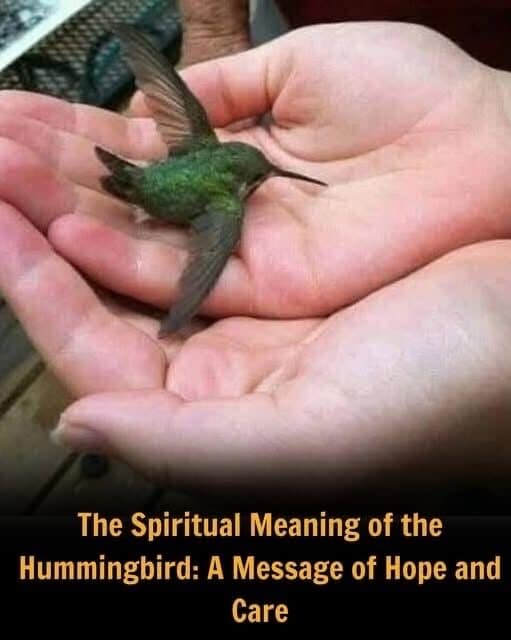Did You Know That If a Hummingbird Comes to Your Home, It Means Something Special?

Across generations and cultures, the appearance of a hummingbird has carried meaning far beyond its tiny wings. To some, it’s simply a flash of color—quick, dazzling, and gone in a heartbeat. But to others, it feels like something more: a gentle interruption in the noise of daily life, a brief moment that seems touched by meaning.
For centuries, people have been captivated by these little creatures—not only for their beauty and speed but for what they represent. In many Native American traditions, hummingbirds are seen as symbols of joy, renewal, and resilience. Tribes of the Southwest tell stories of them as bringers of harmony and love, messengers of light who chase away darkness. To see one near your home was to be blessed with happiness and good fortune, a reminder that persistence and grace can coexist.
In Mexican folklore, hummingbirds are believed to carry messages between the living and the spirits of ancestors. The ancient Aztecs revered them as symbols of strength and rebirth—warriors reborn to sip nectar from the world they once protected. Even today, many people across Latin America believe that when a hummingbird appears, it brings a sign of love or remembrance from someone they’ve lost.
That belief reaches far beyond any single culture. Around the world, people share stories online of hummingbirds appearing when they needed them most—after farewells, during hardship, or on days marked by grief. Some see coincidence. Others see connection. A small life hovering at the window becomes a moment of calm, a whisper of comfort. It’s not about proof—it’s about meaning.
Science can explain why hummingbirds are drawn to certain places: the color of flowers, the shimmer of glass, the scent of sugar water. But it can’t explain why their presence feels personal. Watching one hover—wings invisible from speed, heart racing faster than you can imagine—is to witness pure energy in motion. Perhaps that’s why the sight lingers long after they’re gone.
Spiritually, hummingbirds symbolize lightness of being. They remind us to let go of what weighs us down—to move forward with grace, joy, and focus. In dreams, they’re said to represent healing, clarity, and renewal. To see one is to be reminded that beauty is fleeting, but worth noticing every time it appears.
For those who grieve, their visits often carry comfort. A hummingbird at your porch isn’t a spirit returned—it’s a sign that love endures. Energy doesn’t vanish; it transforms. Love, too, finds new forms to reach us when we least expect it.
Despite their fragile size, hummingbirds are among nature’s toughest travelers. They migrate thousands of miles across deserts and seas, wings beating up to 80 times per second just to stay in flight. Their hearts pulse over a thousand beats per minute, yet they endure storms and impossible distances. Seeing one reminds us that strength doesn’t always roar—it can also shimmer quietly in the sunlight.
To those who believe in signs, a hummingbird’s visit is never random. It might appear on a day of doubt or in a moment of waiting, as if to say: keep going. Be light. Stay open.
But even without any symbolism, their visits carry meaning simply by existing. They don’t ask for attention; they earn it. They are beauty in motion, proof that the smallest moments can still hold wonder. Many gardeners plant bright flowers—bee balm, trumpet vine, red salvia—just to invite them close, hoping for that tiny miracle of color and motion.
And when one finally arrives, even the skeptics pause. The day softens. The world slows. A small flash of wings reminds us that life still holds quiet magic.
In a world that demands explanations, the visit of a hummingbird doesn’t need one. Whether you see it as nature or something more, its message remains the same: slow down, breathe, and notice.
Because sometimes, meaning isn’t something to search for—it’s something that finds you.





